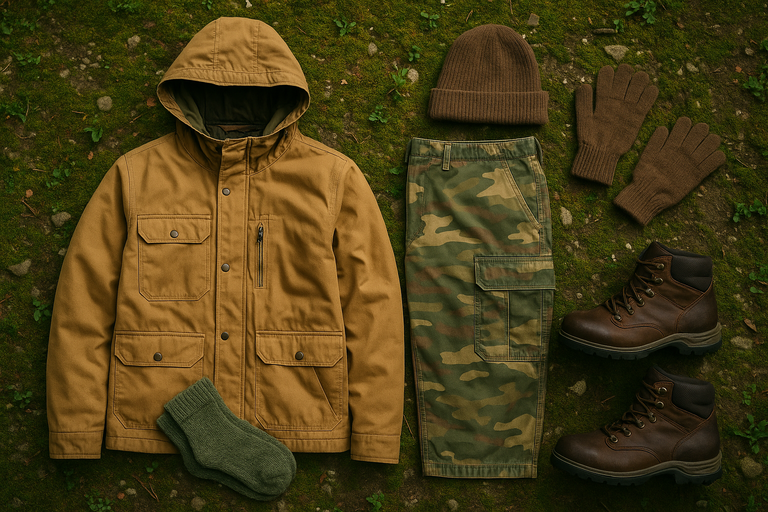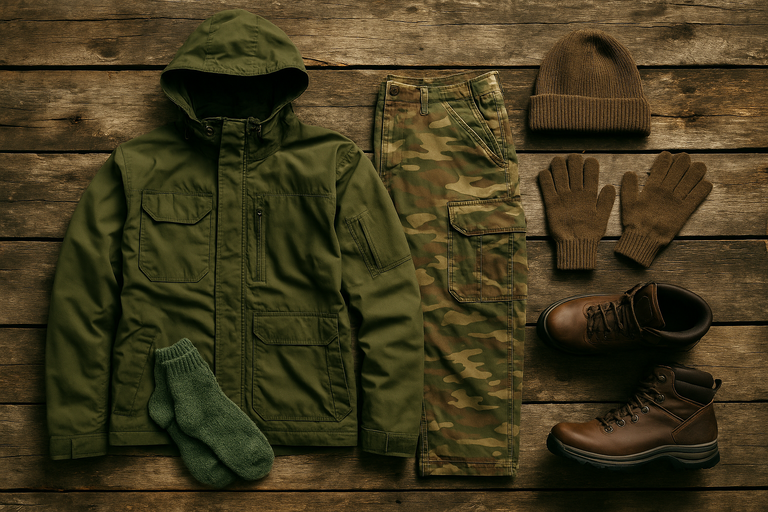When building your emergency go-bag, most people focus on food, tools, and water. However, one of the most overlooked aspects of preparedness is clothing. The bug out bag clothes you pack will determine your comfort, mobility, and even your survival in extreme weather or dangerous terrain. Clothing isn’t just about covering your body—it’s about protecting it from cold, heat, wet conditions, and injury.
Choosing the right gear means finding that balance between lightweight packing and durable, adaptable layers. The bug out bag clothes you select should work in a variety of environments and remain reliable even after days of wear without washing or changing.

Bug Out Bag Clothes That Adapt to Any Environment
Selecting clothing that works in multiple climates is key. Your bug out gear should function in both hot and cold weather, sudden rain, and high winds. That’s why bug out bag clothes must be versatile, breathable, and easily layered.
Start by focusing on a three-layer clothing system:
- Base Layer: Wicks moisture and regulates body temperature
- Insulation Layer: Retains warmth (e.g., fleece or down)
- Outer Layer: Protects against wind, rain, and snow (e.g., waterproof shell)
By layering correctly, you can adjust quickly to changing conditions without overloading your bag.
The Best Fabrics for Bug Out Bag Clothes
The materials you choose can make all the difference in the field. Prioritize synthetic or natural fibers that dry quickly and resist odor. Look for:
- Merino wool: Naturally anti-microbial, warm, and breathable
- Polyester blends: Lightweight, quick-drying, and affordable
- Nylon: Tough and water-resistant
- Avoid cotton: It retains moisture and offers no insulation when wet
Clothing that performs well even when dirty or wet is a cornerstone of reliable bug out bag clothes.

Footwear as a Key Part
Your shoes will carry you through rough terrain, urban obstacles, and long distances. Investing in the right pair is crucial.
- Choose waterproof or water-resistant hiking boots
- Ensure they’re broken in before you pack them
- Pack one or two pairs of moisture-wicking socks (preferably wool)
- Consider quick-drying camp shoes or sandals as a lightweight backup
Foot injuries can stop you in your tracks, so your choice of footwear is just as important as your shelter or tools.
Layering Techniques That Maximize Bug Out Bag Clothes
The right layering system allows you to adapt to your environment without overpacking. A smart approach to bug out bag clothes will let you add or remove layers easily, maintaining temperature control and mobility.
Here’s a quick layering plan:
- Underwear: At least two pairs of breathable, quick-dry briefs
- Base top and bottom: Merino wool or synthetic thermal wear
- Mid-layer: Insulating fleece or lightweight down jacket
- Outer shell: Waterproof and windproof jacket with ventilation
- Pants: Tactical or hiking pants that dry quickly and resist tearing
- Accessories: Hat, gloves, buff, or shemagh (for sun, dust, or warmth)
When combined properly, this setup keeps your body protected while minimizing bulk.

Seasonal Considerations
Your clothing choices should reflect the weather conditions in your region. For colder climates:
- Add insulated gloves and a beanie
- Consider a compact thermal blanket
- Include thicker socks or a balaclava for extreme cold
For hot environments:
- Choose light-colored, UV-protective clothing
- Pack a wide-brimmed hat or sunshade
- Bring cooling cloths or neck gaiters
The more your bug out bag clothes are tailored to your local conditions, the more effective your gear becomes when disaster hits.
Mistakes to Avoid When Packing Bug Out Bag Clothes
Even experienced preppers can make mistakes. Common errors in packing bug out bag clothes include:
- Overpacking: Avoid bringing full outfits for each day. Focus on layer rotation and reuse.
- Neglecting accessories: Things like gloves, hats, and buffs are often forgotten but add huge value.
- Wrong fabric choices: Cotton t-shirts and jeans might feel comfortable now but can become a liability in the wild.
- Ignoring fit and mobility: Make sure clothes aren’t too tight or too loose—they should allow you to move freely.
Being strategic with your clothing choices saves space, reduces weight, and improves your long-term survival outlook.
Maintenance and Packing Tips for Bug Out Bag Clothes
Caring for your gear before an emergency is just as important as the gear itself. Follow these tips:
- Vacuum-seal or roll clothes to save space
- Store socks and underwear in waterproof bags
- Refresh clothing every 6 months to account for wear, weather, and body changes
- Try on your full outfit at least once to ensure comfort and flexibility
Treat your clothing like any other tool—it has to be functional and field-tested.
Final Thoughts on Packing the Right Bug Out Bag Clothes
While gadgets, food, and first aid often steal the spotlight, your bug out bag clothes are your first line of defense against the elements. They regulate temperature, protect your skin, and help you move safely and effectively through crisis scenarios.
Choosing the right clothing is about more than survival—it’s about extending your capability and confidence when the world becomes unpredictable. Review, test, and rotate your gear regularly to make sure you’re ready when it matters most.
Whether you’re building your first kit or updating an old one, never underestimate the power of well-chosen bug out bag clothes.

